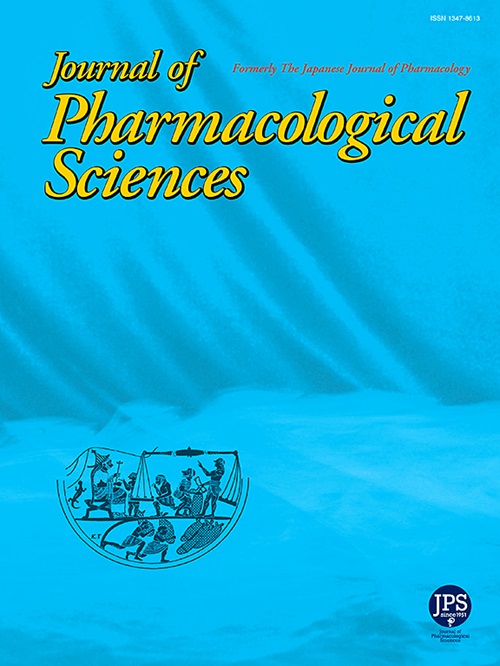Medial prefrontal cortex inputs to the dorsomedial striatum regulate motivation for wheel running in male mice
IF 2.9
3区 医学
Q2 PHARMACOLOGY & PHARMACY
引用次数: 0
Abstract
Wheel running is rewarding for rodents, and thus they exhibit strong willingness to engage in it and desire for it, i.e., motivation. Although neural activity in the dorsomedial striatum (DM-Str) has been suggested to be involved in motivation for wheel running, the causal relationship between neural activity and motivation remains unknown. Here, we investigated the role of neural activity in the DM-Str and the mechanisms regulating this activity in motivation for wheel running. Fiber photometry recordings with GCaMP sensors revealed that DM-Str neural activity transiently increased at the initiation of running on running wheels (RWs), whereas it decreased during running. Intra-DM-Str injection of the GABAA receptor agonist muscimol or the α-amino-3-hydroxy-5-methyl-4-isoxazole propionic acid (AMPA) receptor antagonist NBQX reduced the number of RW rotations. In the open field test, neither muscimol nor NBQX injection into the DM-Str affected locomotor activity. Additionally, selective chemogenetic inhibition of projections from the medial prefrontal cortex (mPFC) to the DM-Str reduced RW rotation numbers without altering locomotor activity. Together, our findings suggest that DM-Str neural activity, enhanced by glutamatergic projection from the mPFC, plays a critical role in regulating motivation for wheel running.
内侧前额叶皮层对背内侧纹状体的输入调节雄性小鼠滚轮跑的动机
跑轮对啮齿动物来说是一种奖励,因此它们表现出强烈的参与意愿和渴望,即动机。虽然背内侧纹状体(DM-Str)的神经活动被认为与车轮运动的动机有关,但神经活动与动机之间的因果关系尚不清楚。在此,我们研究了神经活动在DM-Str中的作用,以及这种活动在车轮跑动机中的调节机制。GCaMP传感器的纤维光度记录显示,DM-Str神经活动在跑步轮(RWs)开始时短暂增加,而在跑步过程中则下降。在dm - str内注射GABAA受体激动剂muscimol或α-氨基-3-羟基-5-甲基-4-异恶唑丙酸(AMPA)受体拮抗剂NBQX可减少RW旋转次数。在野外试验中,DM-Str内注射muscimol和NBQX均不影响运动活动。此外,选择性化学发生抑制内侧前额叶皮层(mPFC)到DM-Str的投射减少了RW旋转次数,但不改变运动活动。综上所述,我们的研究结果表明,DM-Str神经活动被来自mPFC的谷氨酸能投射增强,在调节车轮跑的动机中起着关键作用。
本文章由计算机程序翻译,如有差异,请以英文原文为准。
求助全文
约1分钟内获得全文
求助全文
来源期刊
CiteScore
6.20
自引率
2.90%
发文量
104
审稿时长
31 days
期刊介绍:
Journal of Pharmacological Sciences (JPS) is an international open access journal intended for the advancement of pharmacological sciences in the world. The Journal welcomes submissions in all fields of experimental and clinical pharmacology, including neuroscience, and biochemical, cellular, and molecular pharmacology for publication as Reviews, Full Papers or Short Communications. Short Communications are short research article intended to provide novel and exciting pharmacological findings. Manuscripts concerning descriptive case reports, pharmacokinetic and pharmacodynamic studies without pharmacological mechanism and dose-response determinations are not acceptable and will be rejected without peer review. The ethnopharmacological studies are also out of the scope of this journal. Furthermore, JPS does not publish work on the actions of biological extracts unknown chemical composition.

 求助内容:
求助内容: 应助结果提醒方式:
应助结果提醒方式:


